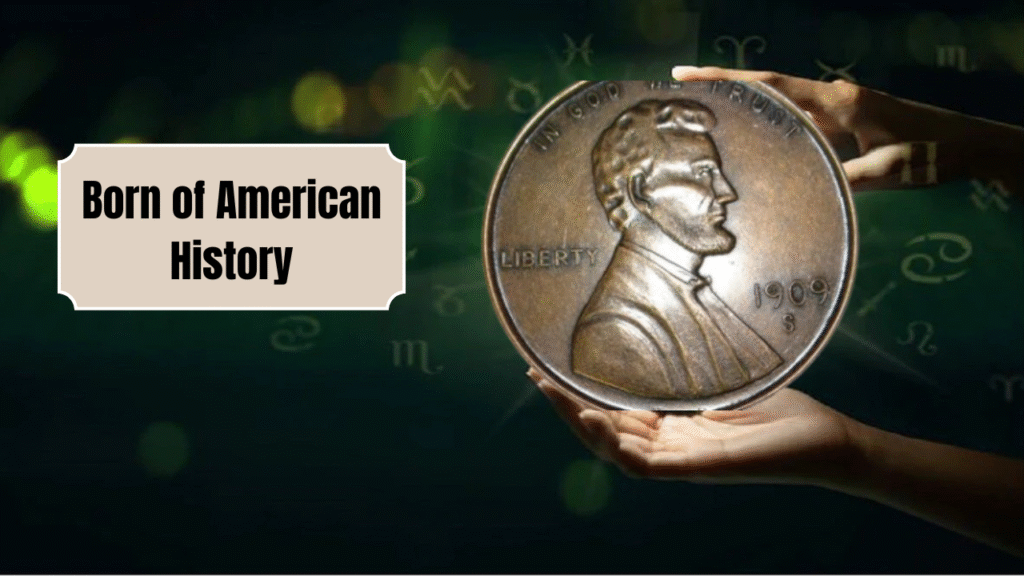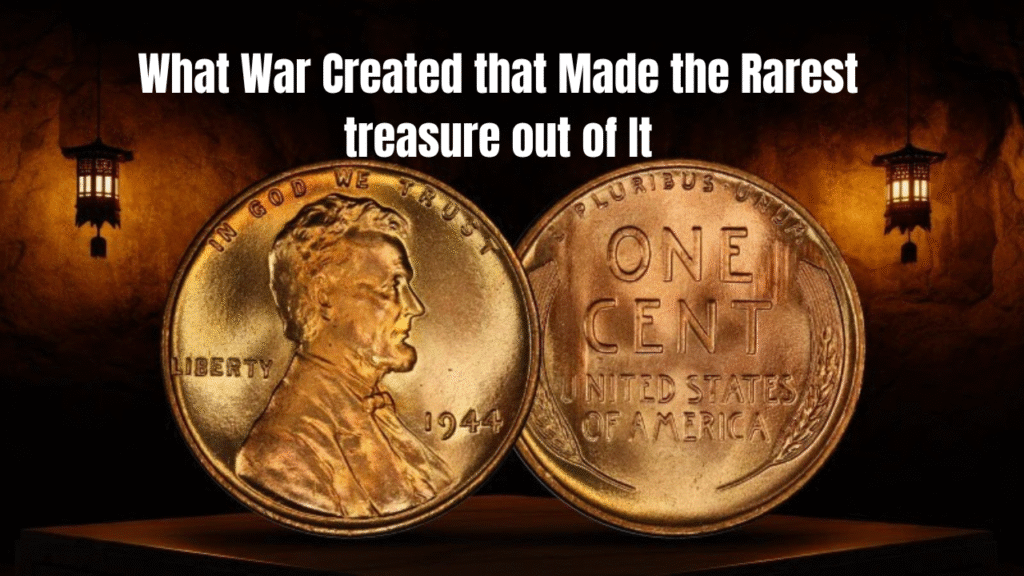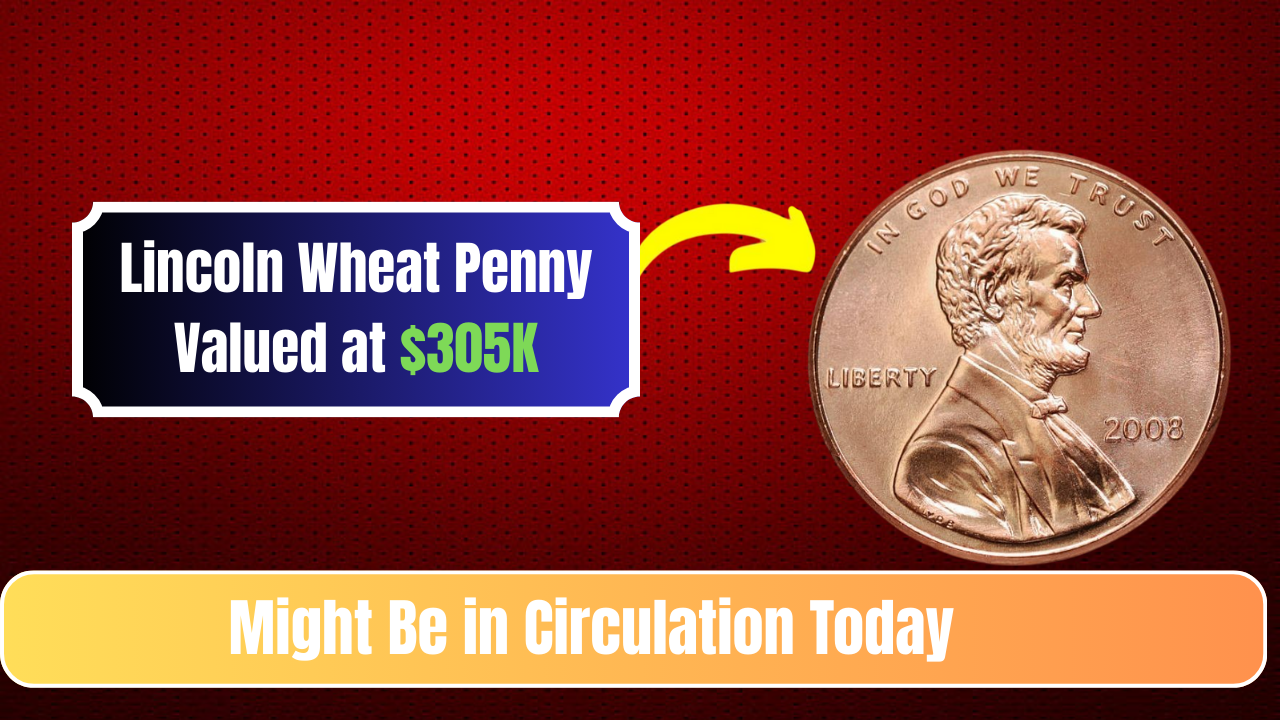Let us understand that the Lincoln Wheat Penny had comfortably been in American pockets for something like fifty years. At this point, it might seem though treasure cannot be obtained from it. But in that strange and exciting world of coin-collecting, these little copper coins can sometimes reach for astonishing values, even selling above $305,000 in one case. Such revelations have spurred people into going through their spare coins to look for small fortunes in their pennies. Of course, nothing is better than to find a coin of such high value, but there is always some chance that some of those treasures might go unnoticed and continue to circulate in ordinary transactions, waiting for the nimble eyes of some observer.
Born of American History
The Lincoln Wheat Penny started its story in the year 1909 when the country celebrated the 100th birthday of Abraham Lincoln. It is one deviation from all coinage in the United States, considering this was the first time that a president’s likeness appeared on a regularly circulating coin in what is now America.

The penny designed by sculptor Victor D. Brenner presented the dignified visage of Lincoln on the obverse and two wheat stalks framing the words “ONE CENT” on the reverse. This legendary window would continue until 1958 when the wheat stalks would be replaced by the Lincoln Memorial. Over nearly half a century, billions of these pennies passed into circulation, thus making it the most recognizable American coin of the 20th century.
How War Created Rare Treasures
Much of the creation of Lincoln Wheat Pennies occurred during and through the searing battles of World War II; most of them came into the existence born out of it. A particular example is in history when in 1943, as a result of the war, copper became rare bronze for producing and minting steel pennies termed as zinc coated. During this weird clinical undertaking, at least a couple of 1942 copper blanks stuck in the presses were accidentally struck with 1943 dies. The result of such strange accidents is one of the rarest in American numismatics and some of the most valuable coins. Pricey collector scarcities reach more than $300,000 in fine condition. The 1943 copper penny is that rare; it has less than about 20 pieces known to exist distributed among the three mints (Philadelphia, Denver, and San Francisco). Their extreme scarcity combined with their historical significance is an explanation as to why they can command prices of more than $300,000 in very good condition.
Roughly half a century hence, these pennies entered American pockets without any problem at all, and perhaps treasure could not possibly be, although, in the strange and exciting world of coin-collecting, these pieces have sometimes achieved some astonishing values in the market, one such instance being over $305,000 for a specimen. Thus has everyone scrambling through their spare coins, wondering if any pennies might hold a small fortune inside. In reality, however, most such finds are extremely rare, and the average handful of change probably does not contain such loot; however, some of these treasures might, still unnoticed, be busy circulating among us with our daily transactions, under the nose and within reach of a very keen observer.
Based on American History
Lincoln Wheat Pennies trace their origins to 1909 when the country was commemorating Abraham Lincoln’s one-hundredth birthday; it was also quite the departure from all the coinage in the United States, as this was the first time that a likeness of a president appeared on an actively circulating coin from this country. Originally designed by the sculptor Victor D. Brenner, the penny presented Lincoln’s dignified visage on the obverse, while two wheat stalks framed the words “ONE CENT” on the reverse. That legacy would last until 1958 when the wheat stalks were replaced by the Lincoln Memorial. For more than 50 years now, billions of these pennies proved to be the most recognizable American coin of the 20th century.
What War Created that Made the Rarest treasure out of It
Yes, indeed, many of these Lincoln Wheat Pennies came into being and were nurtured under or inside the burning heat and warfare environment of the Second World War. During the uneasy year of 1943, because of the war, copper moved gloriously to one side and coined steel pennies coated with zinc made up by the U.S. Mint. Yet in somewhere in the transition process, at least a couple of 1942 copper blanks stuck in the presses were hit by accident with 1943 dies. The result of such very strange accidents in American numismatics can very well be considered the rarest and is certainly one of the coins the most costly to acquire.

Prices exceed the $300,000 mark for near-perfect conditions solely due to scarcity. The amazing 1943 copper penny is so rare that only about twenty or so exist across all three mints (Philadelphia, Denver, and San Francisco). Its worth derives in large part from both its extreme scarcity and historical interest.
Penny Value Understanding
Whether a Lincoln Wheat Penny is worth face value or some small fortune is dependent on several factors. Rarity is the most important factor; the less of them there are, the more are the willing collectors to pay to acquire one. Since they were a few, the key dates such as 1909-S VDB (with the designer’s initials), 1914-D, and 1922 “No D” are very much in demand. Mint errors also dramatically inflate value, as exemplified by the 1955 Double Die penny with its signature doubling of the date and lettering, which can sell for tens of thousands of dollars in excellent condition. The item considered the second condition plays an equally paramount role; uncirculated ones sell for much higher than their worn-down counterparts.
Critical Importance of Keeping
Condition is the alpha and omega of the numismatic world. Numismatists speak in terms of coins ranging from Poor (P-1 grade) to Perfect Mint State (MS-70 grade) based on their preservation characteristics. For instance, a Lincoln Wheat Penny that escaped circulation such that its mint luster is still intact and has shown no wear can be valued hundreds to thousands of times more than an otherwise identical penny that circulated heavily. Price/value can vary greatly based on even minute differences in these states. That’s why it is almost impossible anywhere nowadays to just spot a specimen worthwhile in someone’s pocket change-however not entirely impossible-the major ones have been kept in collections for several decades.
Identification of the Valuable Specimens
When searching for treasure in Lincoln Wheat Pennies, several specific attributes to watch for are: First, the date: Coins dated 1909, 1914, 1922, 1931, and 1943 are particularly valuable, especially the copper ones from 1943.
The next thing to check is for the mint mark, which is just a small letter appearing below the date. If the coin has no mint mark, it means it was struck in Philadelphia; “D” stands for Denver; and “S” indicates San Francisco. One quick way for pennies dated 1943 to be pin-pointed as false or real is to use a magnet-the ordinary steel ones will stick to the magnet while the rare copper ones will not. The examination of a coin under a magnifying instrument may bring to light extremely valuable imperfections such as double dies or repunched mint marks.
Hunting thrills
Years have passed, yet still, a few Lincoln Wheat Pennies have emerged among mysterious places. Old collections from grandparents or some dusty coin jars stowed away at the depths of attics-even rolls from banks sometimes hide a few intriguing finds. Just this year, however, in 2019, a Massachusetts family stumbled upon an authenticated 1943 bronze penny that father had collected and sold for a whopping more than $200,000 in what was considered an incredible find. Unfortunately, events like these happen far too rarely in the sheer excitement that keeps so many collectors with their eyes glued to the change and scouring penny rolls. Most importantly, it is the thrill of this discovery that sets the treasure hunt sensation for a person collecting mint pennies, where there might be something as commonplace as a penny-another incredible aspect of collecting few hobbies can challenge or rival.

More Than Monetary Value
They grab the headlines with their potential worth in money, but Lincoln Wheat Pennies came to mean more than just their potential to pay off. These coins are physical links to the history of America, passing through myriad hands at critical junctures in the twentieth century, from the hands of those people who lived through the Great Depression to those that witnessed World War II and the beginning of the Cold War.
The steel pennies of 1943 remain, in most people’s minds, a material vestige of the total mobilization of America in wartime, an occasion when even the composition of the humblest penny changed in the effort to go to war. This, for many collectors, is far more value than any price tag could convey, and thus, penny-collecting, whether or not the cash value is there, makes for very interesting artifacts of ordinary life in America.
Collecting As a Great Hobby
One of the most easy ways to get into Numismatic pursuits is to collect Lincoln Wheat Pennies. A wheat penny collection does not need much seed money; it can start from coins found in circulation or brought over by relatives. Most collectors begin by collecting a date-and-mint set-first getting one penny issued in each year and mint, and focusing on the harder-to-find varieties later. The hobby teaches about American history, economics, manufacturing processes, and developing skills like patience and attention to detail. Whether for profit or for the mere enjoyment of it, collecting wheat pennies connects anyone who has shaped their senses to a rich tradition of Numismatics that have been shared by generations of Americans.
FAQs:
What makes the Lincoln Wheat Penny worth $305,000?
The Lincoln Wheat Penny valued at $305,000 is typically a rare variety, such as an early mint error, a rare date (like the 1909-S VDB or 1943 copper penny), or one in exceptional mint condition. These rare factors significantly boost its value among collectors.
How can I tell if my Lincoln Wheat Penny is valuable?
Check the date, mint mark, and condition. Key dates like 1909-S VDB, 1914-D, and 1943 copper pennies are highly valuable. Also, look for errors such as double die strikes or off-center minting. Having the coin appraised by a professional can confirm its worth.
Are Lincoln Wheat Pennies still found in everyday change?
Yes, although it’s rare, Lincoln Wheat Pennies do occasionally turn up in circulation. They were minted from 1909 to 1958, and many were hoarded or forgotten in jars and drawers, making it possible for them to resurface.
Where can I sell a rare Lincoln Wheat Penny if I find one?
You can sell a rare Lincoln Wheat Penny at coin shows, through reputable coin dealers, online auction sites like eBay, or at specialized numismatic auctions. Always have the coin authenticated and graded to get the best value.












